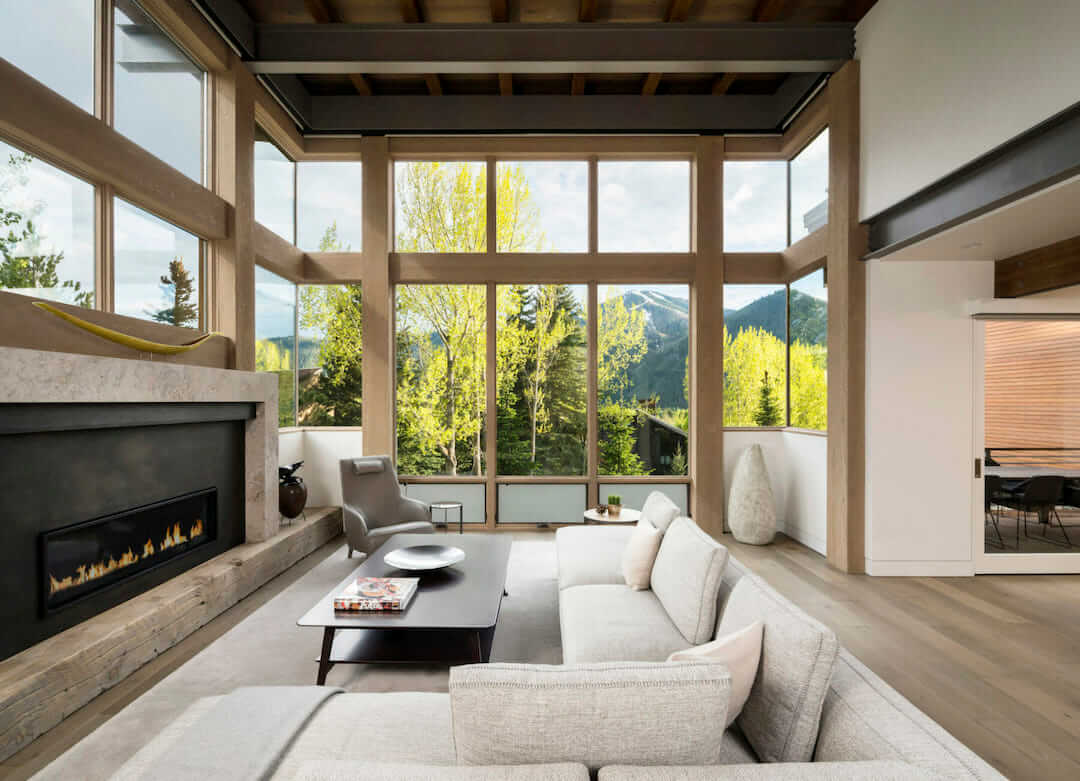As design projects begin to flood in for the coming year, we look towards the future and hope to reach higher heights and push the limits of those that came before us.
However, if we are going to revolutionize how we design, then architects must reinvent how we construct. That means taking a look at the basics and trying something new. One way we see the industry beginning this transformation is through the use of construction materials.
Breakthroughs in technology have already evolved the way architects see construction. For example, reinforced concrete and developed metal made it possible for taller skyscrapers and expansive bridges. Not only are these material advancements making it possible for design improvements but also future city construction.
Here are the materials we see, making a difference in the architecture industry in 2020.
Timber
Tall timber buildings have been gaining momentum over the past several years, and it is only expected that they will continue to rise. Design teams from a variety of countries are getting their hands on evolved timber technology, allowing them to push their structures to higher heights.
In 2019, the International Code Council (ICC) approved 14 code changes as part of the 2021 International Building Code (IBC). These changes will allow structures that use mass timber of up to 18 stories. Included in these changes is the introduction of three new construction types—IV-A, IV-B, and IV-C. These construction types define heavy timber as sawn lumber or structural glue-laminated wood and are associated with Type IV construction.
Not only do the changes made by the ICC give us reason to expect taller wood buildings but the other benefits the material provides. Timber buildings tend to help save money, contribute to economic growth and are better for the environment.
While the benefits of timber are far-reaching, architects must determine the ductility, load paths, and transfer and uplift forces in their designs. Structural elements are crucial to the proper construction using such materials.
Laminated Glass
Another material making headway in the architecture industry is laminated glass. Already used in the construction of offices, retail stores, and other commercial buildings, laminated glass is in high demand thanks to new adaptive technology. Many of the latest office designs include an all-over glass effect on the outside of the building. While some are afraid of the sound and light affecting their space, laminated glass makes it possible to reduce both.
Laminated glass reduces sound going in or out of a structure. You can also use tinted glass and accompanying shades that adapt their drawings depending on the direction of the sun. It also protects you from ultra-violet light rays.
Along with using laminated glass on the exterior of a structure, architects can also use it for doors, side panels, windows, shelving, wall structures, and more.
Smart Glass
Glass is also taking a turn towards the technological thanks to two types of newly developed “Smart Glass.” These specialty types of glass combine function and aesthetic for total virtual control over the glass included in the construction industry. The main upgrade smart glass boasts is its ability to control window tinting dynamically. One variety transitions between clear and opaque glass when privacy is needed by the use of an electrical supply to the glass and the push of a button or even a link to an app. Many buildings employ this glass for interior spaces, and occasionally for exterior, as well. Another variety of Smart Glass uses an electrical supply to control the tint of the glass. This type of glass can dynamically change the level of tint in the glass to respond to changing exterior light conditions and weather. This virtually eliminates the need for blinds or other internal shading devices to control solar heat gain and glare as the glass takes care of that.
Concrete
Concrete is also getting an upgrade in 2020 with self-healing abilities. The technology behind this upgraded construction material involves the mixing of Bacillus bacteria with the calcium lactate. As cracks form over time or weather, the mixture helps create limestone and fill in the cracks on its own. The bacteria included in the concrete can lay dormant for up to 200 years, making the re-imagined material relatively long-term.
Along with self-healing concrete, some self-healing metals and facades use nanomaterials to help patch up small cracks in a structure. Fortunately, self-healing concrete can typically fill cracks more substantial than the others. Not only is this great news for concrete workers but can help architects build sturdier buildings than ever before.
Plastic
Architects are looking for environmentally-friendly construction materials as the push for sustainability reaches new levels. Bioplastic is the newly-formed alternative to the commonly used plastic material. The first use of bioplastic in construction occurred in Stuttgart, Germany. Designers created an ultra-modern pavilion made from bioplastic that brought scientists, architects, technicians, and environmentalists together. Now, architects are using bioplastics in cladding, structural elements, and other aiding structures.
Energy-generating Materials
It is no secret that construction material is now able to help in power distribution. For example, Tesla developed Solar Roof tiles that can facilitate the collection of solar energy for use in running a home. The glass-based tiles are a comprehensive substitute for conventional roofing materials.
Another example comes in the form of light-generating cement. Dr. José Carlos Rubio Ávalos of the UMSNH of Morelia developed cement that can absorb and irradiate light energy. These developments will make concrete more functional and versatile from an energy efficiency standpoint.
Architects can use these materials in strategic design portfolios for greater efficiency in their structures. It will also promote sustainability and a focus on environmentally-friendly designs that this industry desperately needs.
Architecture in 2020 & You
2020 is the year of revolution. It is a new decade and the perfect opportunity to make better design choices. Whether you are reinventing the way you design to help the environment or push the limits of your own style, today’s materials will help make it possible. For additional ideas on how the architecture industry is evolving, contact Think Architecture.


